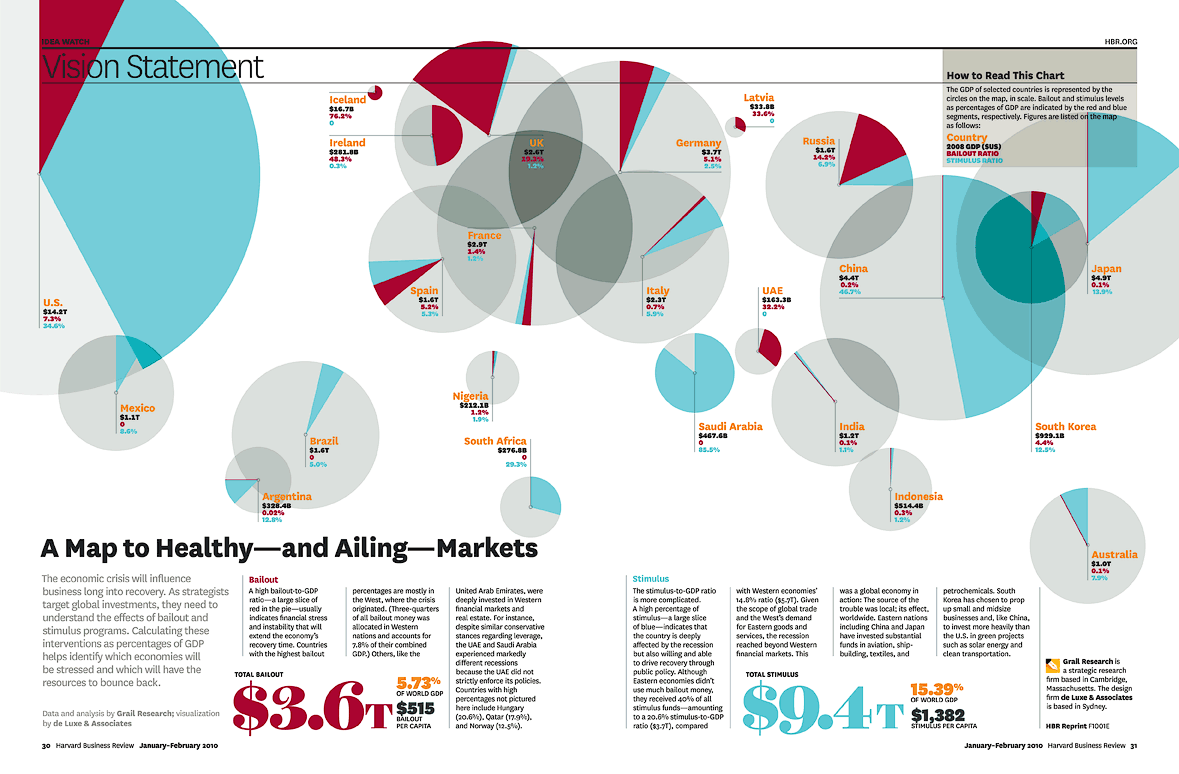 I had a knee jerk reaction when I saw this link on MR which was listed as Which country showed the most spending restraint during the financial meltdown?
I had a knee jerk reaction when I saw this link on MR which was listed as Which country showed the most spending restraint during the financial meltdown?It showed bailout money as a percent of GDP and that the U.S. was the largest while France was the smallest. The link to it was titled When Sh*t Hit The Fan, France Stuck To Its Ideals While The U.S. And U.K. Became Socialist Monsters.
My knee jerk reaction was duh! The graphic shows nothing. A country like France with larger government spending the either the U.S. or U.K. would be more constrained in being able to spend more. Duh!
On more careful reflection my reaction is the same. Only this time, a more careful examination resulted.
1. Bailout/stimulus spending really should be as a percent of GDP as already depicted but also government spending should be a percent of GDP and also be depicted and thus a more instructive graphic could be ratio of total government spending (including bailout/stimulus) to GDP.
2. Some googling brought me to the following link which tabulates government spending as a percentage of GDP. France is 7th at 61.1 while U.S. and U.K are 19.9 and 50.0 respectively(ranked at 50th and 37th). So the hypothesis that France is more constrained bears out.
3. More googling lead me to believe that perhaps the numbers above aren't correct. This link has U.S. government spending at 46 percent. Another MR link also has U.S. spending at roughly 40 percent. Calculations using FRED data series FGCEA and GDP is roughly 9 percent (1,200/14,000). The CBO numbers seem to be in accord with #2 however, while here NIPA numbers show it to be around 35%. So perhaps it's all a matter of definition.
4. Which leads back to the graphic which isn't clear at all as to what constitutes stimulus and bailout spending. Do I really believe that Nigeria tracks bailout and stimulus spending separately?
No comments:
Post a Comment